Unit 1 The king’s new clothes 复习课件(共44张PPT)
文档属性
| 名称 | Unit 1 The king’s new clothes 复习课件(共44张PPT) | 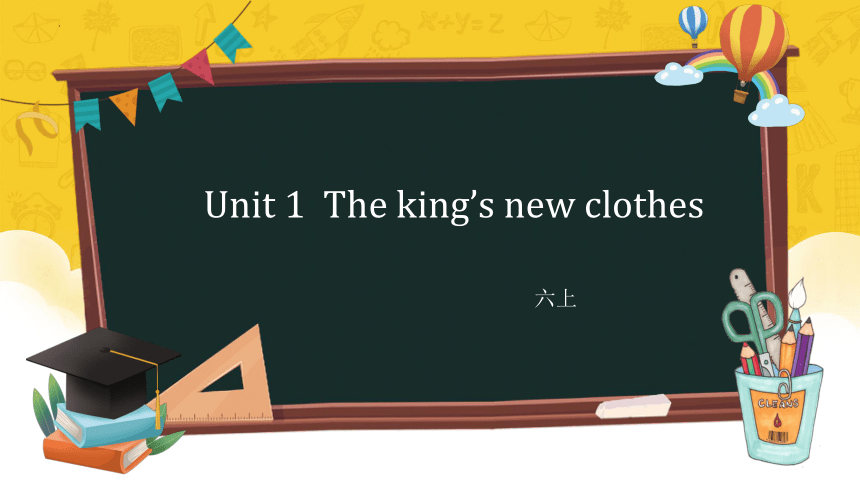 | |
| 格式 | zip | ||
| 文件大小 | 3.1MB | ||
| 资源类型 | 教案 | ||
| 版本资源 | 牛津译林版 | ||
| 科目 | 英语 | ||
| 更新时间 | 2022-09-13 08:28:22 | ||
图片预览

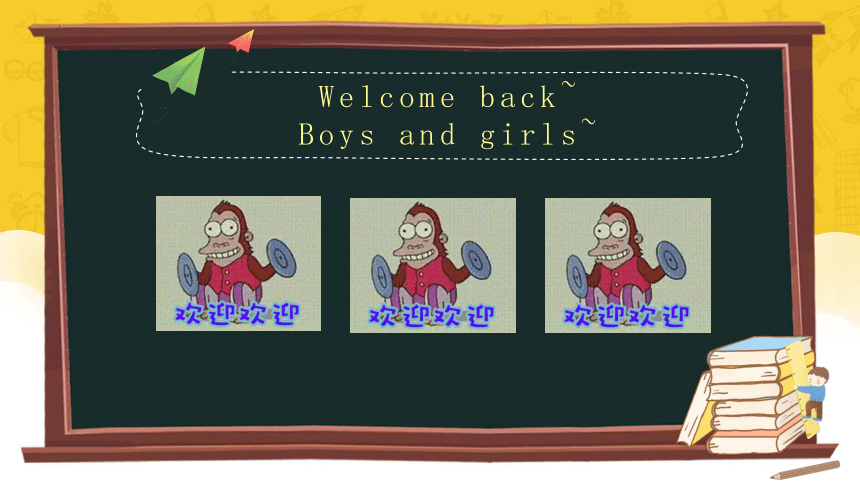
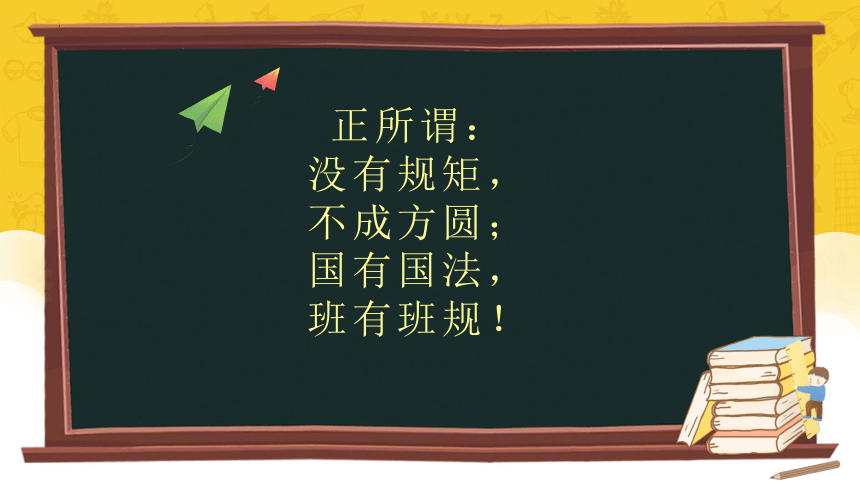
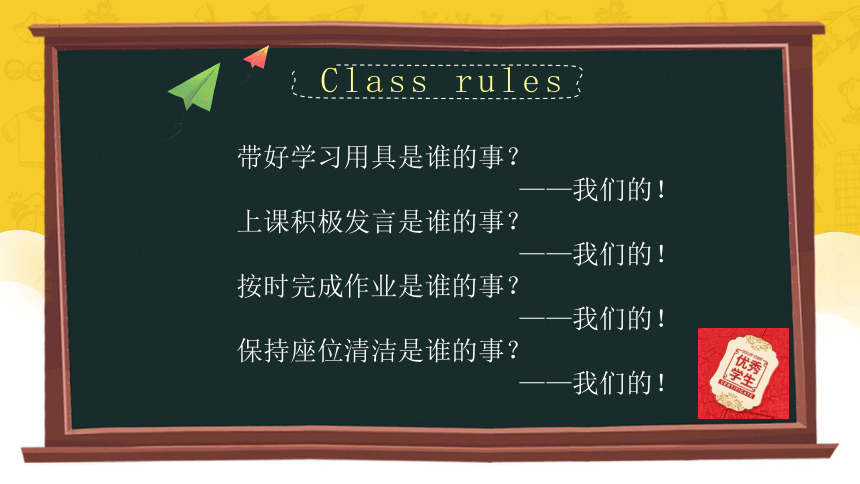
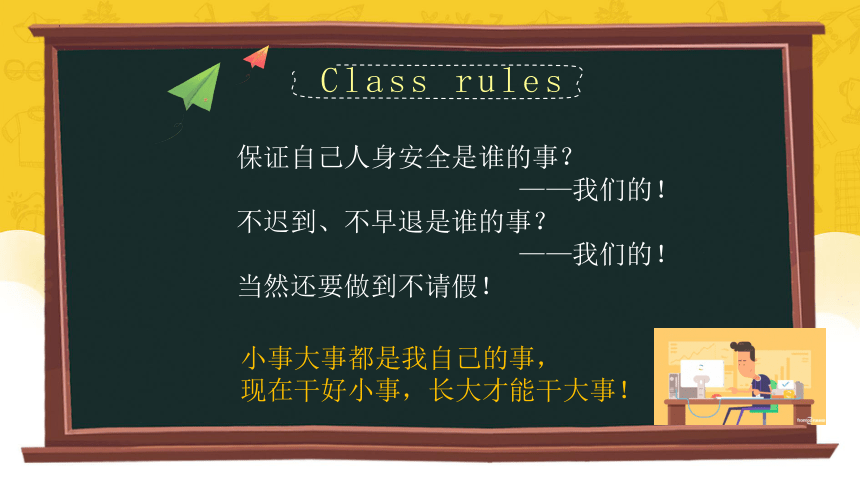
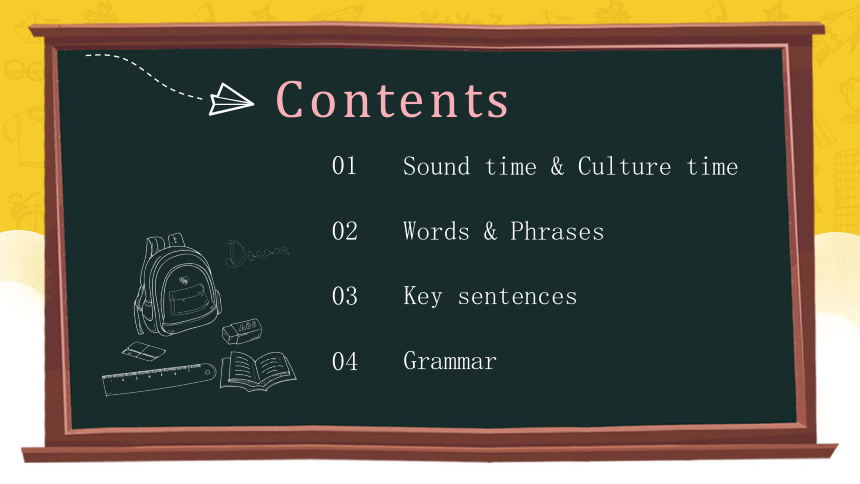
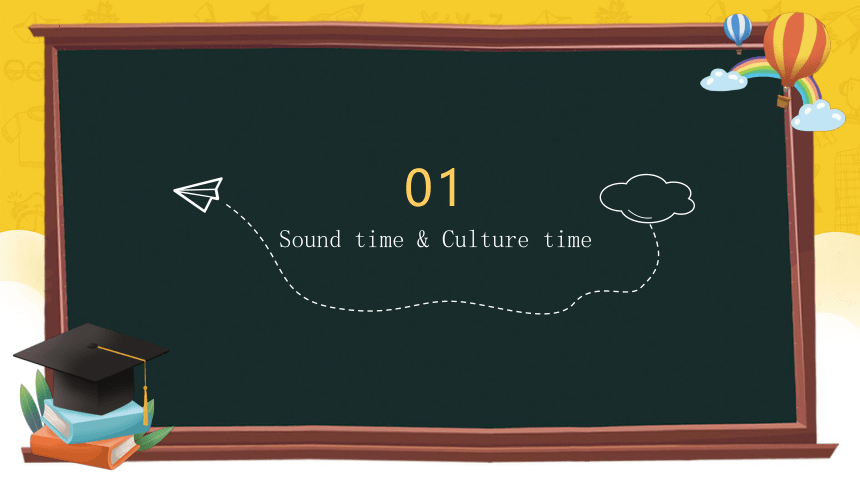
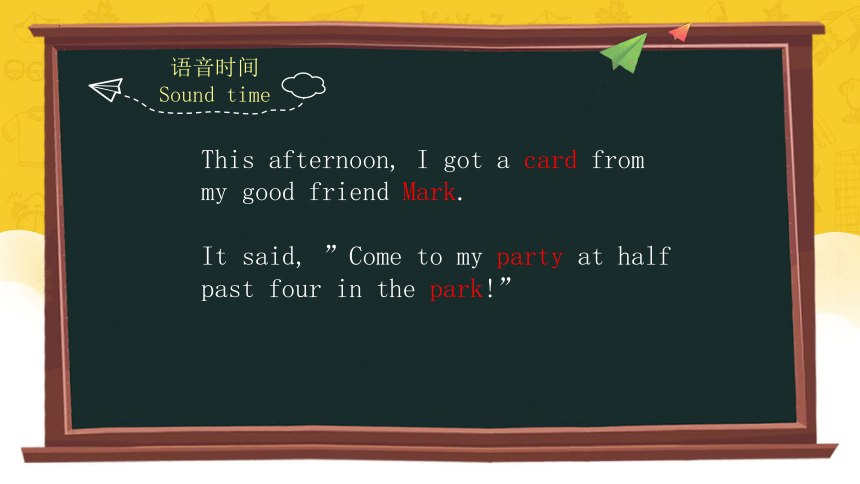
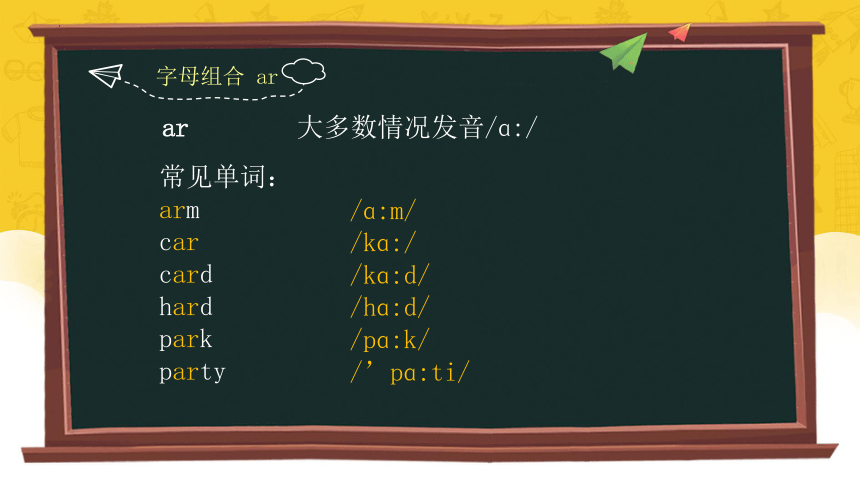
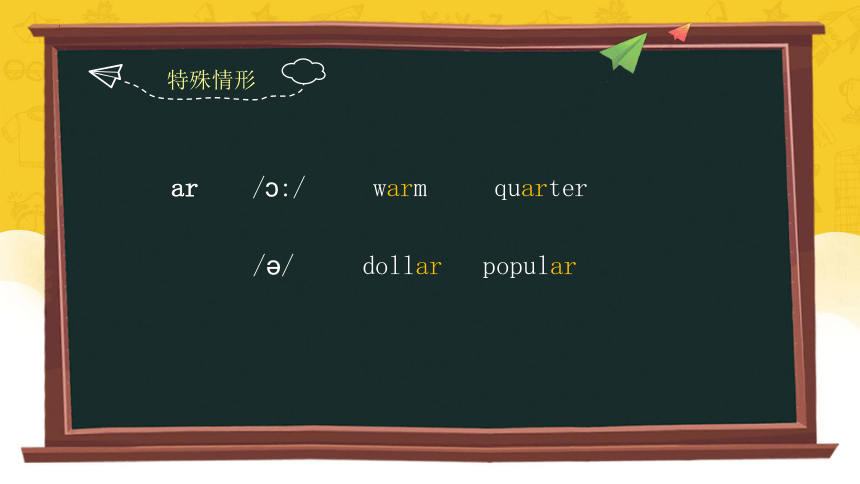
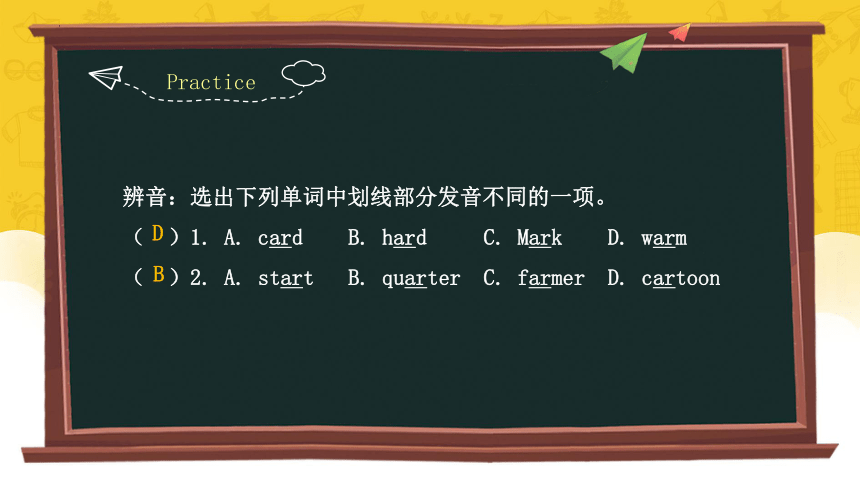
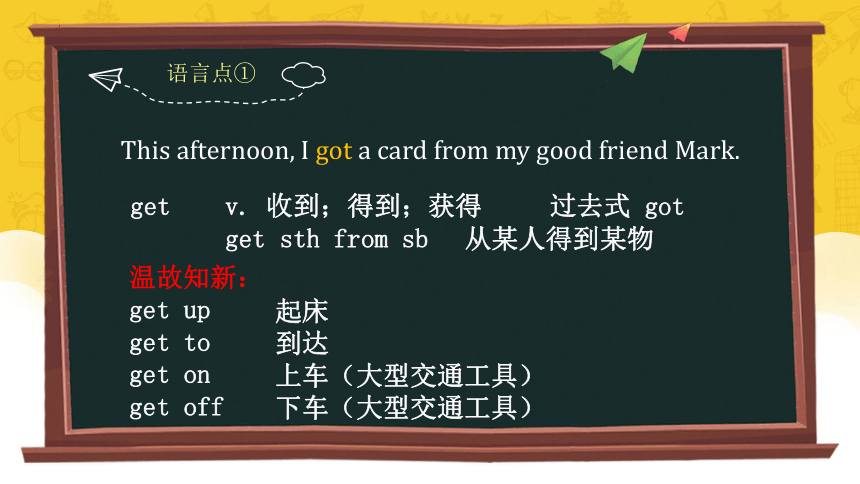
文档简介
(共44张PPT)
Unit 1 The king’s new clothes
六上
Welcome back~
Boys and girls~
正所谓:
没有规矩,
不成方圆;
国有国法,
班有班规!
Class rules
带好学习用具是谁的事?
——我们的!
上课积极发言是谁的事?
——我们的!
按时完成作业是谁的事?
——我们的!
保持座位清洁是谁的事?
——我们的!
Class rules
保证自己人身安全是谁的事?
——我们的!
不迟到、不早退是谁的事?
——我们的!
当然还要做到不请假!
小事大事都是我自己的事,
现在干好小事,长大才能干大事!
Contents
Sound time & Culture time
Words & Phrases
Key sentences
Grammar
01
02
03
04
01
Sound time & Culture time
语音时间
Sound time
This afternoon, I got a card from my good friend Mark.
It said, ”Come to my party at half past four in the park!”
字母组合 ar
ar 大多数情况发音/ɑ:/
常见单词:
arm
car
card
hard
park
party
/ɑ:m/
/kɑ:/
/kɑ:d/
/hɑ:d/
/pɑ:k/
/’pɑ:ti/
特殊情形
ar / :/ warm quarter
/ / dollar popular
Practice
辨音:选出下列单词中划线部分发音不同的一项。
( )1. A. card B. hard C. Mark D. warm
( )2. A. start B. quarter C. farmer D. cartoon
D
B
语言点①
This afternoon, I got a card from my good friend Mark.
get v. 收到;得到;获得 过去式 got
get sth from sb
从某人得到某物
温故知新:
get up
get to
get on
get off
起床
到达
上车(大型交通工具)
下车(大型交通工具)
语言点②
It said, ”Come to my party at half past four in the park!”
half past four
四点半
Practice
单项选择
( )I ____ up ____ half past six yesterday morning.
A. getted; at
B. get; on
C. got; at
C
Culture time
This is an American cowboy.
He's wearing jeans.
Culture time
This is a Scottish man. He's wearing a kilt.
苏格兰裙
Practice
单项选择
( )This man is ____ a kilt. He’s a ____man.
A. wearing; Scottish
B. wears; Scott
C. wore; Scottish
A
02
Words & Phrases
看音标拼读单词
1. /'fu l / 2. /'klev /
3. /nekst/ 4. /θru /
5. /lɑ f/ 6. /we /
7. /'m d k/ 8. /i t /
9. /se / 10. /'sent( )ns/
11. /kw k/ 12. /hɑ d/
13. /'l tl/ 14. / t n/
15. /t a ld/ 16. /t ldren/
17. /w z/ 18. /w /
foolish
clever
next
through
laugh
wear
magic
each
say
sentence
quick
hard
little
turn
child
children
was
were
四会短语
1. 很久以前
long long ago
2.讲故事
tell a story = tell stories
3.新衣服
new clothes
4.每个学生
each student
5.一天
one day
6.在山上
on the mountain
四会短语
7.为……制作……
make……for……
8.下一句
the next sentence
9.试穿
try on
10.一位老人
an old man
11. 聪明的人
clever people
12.居住在……
live in…
四会短语
13. 愚蠢的人
foolish people
14. 认真思考
think hard
15. 走过
walk through
16. 不得不
have to
17. 许多人
a lot of people = lots of people = many people
18. 变成
turn into
四会短语
19. 在街道上
in the street
20. 照顾他
look after him
21. 漂亮的衣服
beautiful clothes
22. 对……喊叫
shout at
23. 一个小男孩
a little boy
24. 对某人很好
be nice to sb.
四会短语
25. 指着……
point at…
26. 玩游戏
play a game
03
Key sentences
No.1
我们可以为您做新衣服。___________________________________________
We can make new clothes for you.
短语:
make sth for sb
为某事做某物
拓展:
buy sth for sb 为某人买某物
cook sth for sb 为某人做饭
介词搭配都是for
No.2
请试穿这些神奇的衣服。___________________________________________
Please try on these magic clothes.
祈使句
动词原形开头,please是标志词之一,可以省略。
Question:
祈使句的否定句是什么样的?
前面加Don’t~
No.3
街上有许多人。_______________________________________________
There were a lot of people in the street.
key word:
people
人,人们
注意:
集合名词,可数,本身只有复数形式
Practice
( )______ watched the football game on TV.
A. Many peoples
B. Much people
C. Many people
C
No.4
那两个男人给国王看他的新衣服。
______________________________________________________
The two men showed the king his new clothes.
show sth to sb = show sb sth
给某人展示某物
key word:
show
Practice
按要求完成句子
Show me your robot, please.(改为同义句)
Show your robot ______ ______, please.
to
me
No.5
国王穿着他的新衣服步行穿过城市。_______________________________________________________________
The king walked through the city in his new clothes.
解析:
① walk through
步行穿过
② in + 服装类名词
through 从中间(内部)穿过
穿/带着……
拓展:
in + 颜色 穿……(颜色)的衣服
练习:单项选择。
( )-- Do you know the boy ______ yellow
-- Yes, he’s Tom.
A. on B. in C. with
B
No.6
多么漂亮的衣服啊!_________________________________
What beautiful clothes!
解析:
此句是由what引导的感叹句,其句型结构为:
① What + 形容词 + 可数名词复数/不可数名词(主语 + 谓语)!
② What + a/an + 形容词 + 可数名词单数(主语 + 谓语)!
拓展:
由how引导的感叹句,句型结构为:
How + 形容词/副词(主语 + 谓语)!
练习:单项选择。
( )______ interesting story it is!
A. What B. How C. What an
C
04
Grammar
① There be
例题:用be动词的正确形式填空
There ________ some juice and eggs in the fridge just now.
There ________ some eggs and juice in the fridge just now.
There ________ any juice or eggs in the fridge just now.
There ________ any eggs or juice in the fridge just now.
was
were
wasn’t
weren’t
解题技巧
定时态:根据时标词定时态
根据名词判断单复数
看关键词,标点符号,判断句子类型
②动词过去式
A little boy pointed at the king and laughed .
The king liked the new clothes .
Two men visited the king.
They showed the king his new clothes.
The king walked through the city.
People looked at the king and shouted .
V(动词) + ed
动词过去式:
动词过去式规则变化
showed visited pointed
shouted
liked
moved
lived
study—studied
cry---cried
一般在动词尾直接加ed
以不发音e结尾的动词去e加ed
以辅音字母+y结尾的动词变y为i加ed
以辅元辅结构的重读闭音节动词,双写词尾辅音字母,再加ed
stop ---
stopped
直
去
双
改
一般过去时:规则的动词过去式读音
以浊辅音或元音结尾加ed读『d』
showed / /
played /ple /
listened / l sn/
climbed /kla m/
cleaned /kli n/
以清辅音结尾加ed读『t』
danced /dɑ ns/
walked /w k/
washed /w /
jumped /d mp/
liked /la k/
watched /w t /
以『t』『d』结尾加ed读『id』
visited / v z t/
pointed /p nt/
shouted / a t/
be动词过去式
is
am
was
are
were
Be 动词的过去式:
1、大部分V(动词) 直接+ ed
一般过去时:表示过去发生的事或存在的状态。动词要用过去式。
动词过去式:
(规则变化)
(不规则变化)
are
were
was
is
am
其他动词…
2、动词以不发音e结尾的去e加ed
4、动词以辅音字母+y结尾变y为i加ed
3、动词以一个辅音字母结尾的重读闭音节动词,双写词尾辅音字母,再加 ed
Be
Notes time 笔记时间
Practice
Be honest
Long long ago there _________(be) a king. He was not an artist(画家) and didn’t draw well , but he __________(like)drawing. He drew from morning to evening every day, but there was a very bad picture on every piece of paper. Yet the king thought (think的过去式) that his pictures _________(be) good . He ___________(show)them to the people . The people were afraid(害怕) of the king ,so they said his pictures _________(be) very beautiful. The king _________(be) very happy.
was
liked
were
showed
were
was
Practice
Be honest
One day, the king ____________(show) some pictures to an artist(画家). The artist ___________(look) at the pictures for some time and said they _________(be) very bad . The king became very angry(生气), he put the artist in prison (监狱).
Two weeks later, on his birthday the king __________(call) the artist again. The king showed the artist some of his pictures and __________(ask) him which one was good. The artist looked at them for some time, then he _____________(turn) to the soldier (士兵) and said, “Take me back to the prison right now !”
showed
looked
were
called
asked
turned
See you
Unit 1 The king’s new clothes
六上
Welcome back~
Boys and girls~
正所谓:
没有规矩,
不成方圆;
国有国法,
班有班规!
Class rules
带好学习用具是谁的事?
——我们的!
上课积极发言是谁的事?
——我们的!
按时完成作业是谁的事?
——我们的!
保持座位清洁是谁的事?
——我们的!
Class rules
保证自己人身安全是谁的事?
——我们的!
不迟到、不早退是谁的事?
——我们的!
当然还要做到不请假!
小事大事都是我自己的事,
现在干好小事,长大才能干大事!
Contents
Sound time & Culture time
Words & Phrases
Key sentences
Grammar
01
02
03
04
01
Sound time & Culture time
语音时间
Sound time
This afternoon, I got a card from my good friend Mark.
It said, ”Come to my party at half past four in the park!”
字母组合 ar
ar 大多数情况发音/ɑ:/
常见单词:
arm
car
card
hard
park
party
/ɑ:m/
/kɑ:/
/kɑ:d/
/hɑ:d/
/pɑ:k/
/’pɑ:ti/
特殊情形
ar / :/ warm quarter
/ / dollar popular
Practice
辨音:选出下列单词中划线部分发音不同的一项。
( )1. A. card B. hard C. Mark D. warm
( )2. A. start B. quarter C. farmer D. cartoon
D
B
语言点①
This afternoon, I got a card from my good friend Mark.
get v. 收到;得到;获得 过去式 got
get sth from sb
从某人得到某物
温故知新:
get up
get to
get on
get off
起床
到达
上车(大型交通工具)
下车(大型交通工具)
语言点②
It said, ”Come to my party at half past four in the park!”
half past four
四点半
Practice
单项选择
( )I ____ up ____ half past six yesterday morning.
A. getted; at
B. get; on
C. got; at
C
Culture time
This is an American cowboy.
He's wearing jeans.
Culture time
This is a Scottish man. He's wearing a kilt.
苏格兰裙
Practice
单项选择
( )This man is ____ a kilt. He’s a ____man.
A. wearing; Scottish
B. wears; Scott
C. wore; Scottish
A
02
Words & Phrases
看音标拼读单词
1. /'fu l / 2. /'klev /
3. /nekst/ 4. /θru /
5. /lɑ f/ 6. /we /
7. /'m d k/ 8. /i t /
9. /se / 10. /'sent( )ns/
11. /kw k/ 12. /hɑ d/
13. /'l tl/ 14. / t n/
15. /t a ld/ 16. /t ldren/
17. /w z/ 18. /w /
foolish
clever
next
through
laugh
wear
magic
each
say
sentence
quick
hard
little
turn
child
children
was
were
四会短语
1. 很久以前
long long ago
2.讲故事
tell a story = tell stories
3.新衣服
new clothes
4.每个学生
each student
5.一天
one day
6.在山上
on the mountain
四会短语
7.为……制作……
make……for……
8.下一句
the next sentence
9.试穿
try on
10.一位老人
an old man
11. 聪明的人
clever people
12.居住在……
live in…
四会短语
13. 愚蠢的人
foolish people
14. 认真思考
think hard
15. 走过
walk through
16. 不得不
have to
17. 许多人
a lot of people = lots of people = many people
18. 变成
turn into
四会短语
19. 在街道上
in the street
20. 照顾他
look after him
21. 漂亮的衣服
beautiful clothes
22. 对……喊叫
shout at
23. 一个小男孩
a little boy
24. 对某人很好
be nice to sb.
四会短语
25. 指着……
point at…
26. 玩游戏
play a game
03
Key sentences
No.1
我们可以为您做新衣服。___________________________________________
We can make new clothes for you.
短语:
make sth for sb
为某事做某物
拓展:
buy sth for sb 为某人买某物
cook sth for sb 为某人做饭
介词搭配都是for
No.2
请试穿这些神奇的衣服。___________________________________________
Please try on these magic clothes.
祈使句
动词原形开头,please是标志词之一,可以省略。
Question:
祈使句的否定句是什么样的?
前面加Don’t~
No.3
街上有许多人。_______________________________________________
There were a lot of people in the street.
key word:
people
人,人们
注意:
集合名词,可数,本身只有复数形式
Practice
( )______ watched the football game on TV.
A. Many peoples
B. Much people
C. Many people
C
No.4
那两个男人给国王看他的新衣服。
______________________________________________________
The two men showed the king his new clothes.
show sth to sb = show sb sth
给某人展示某物
key word:
show
Practice
按要求完成句子
Show me your robot, please.(改为同义句)
Show your robot ______ ______, please.
to
me
No.5
国王穿着他的新衣服步行穿过城市。_______________________________________________________________
The king walked through the city in his new clothes.
解析:
① walk through
步行穿过
② in + 服装类名词
through 从中间(内部)穿过
穿/带着……
拓展:
in + 颜色 穿……(颜色)的衣服
练习:单项选择。
( )-- Do you know the boy ______ yellow
-- Yes, he’s Tom.
A. on B. in C. with
B
No.6
多么漂亮的衣服啊!_________________________________
What beautiful clothes!
解析:
此句是由what引导的感叹句,其句型结构为:
① What + 形容词 + 可数名词复数/不可数名词(主语 + 谓语)!
② What + a/an + 形容词 + 可数名词单数(主语 + 谓语)!
拓展:
由how引导的感叹句,句型结构为:
How + 形容词/副词(主语 + 谓语)!
练习:单项选择。
( )______ interesting story it is!
A. What B. How C. What an
C
04
Grammar
① There be
例题:用be动词的正确形式填空
There ________ some juice and eggs in the fridge just now.
There ________ some eggs and juice in the fridge just now.
There ________ any juice or eggs in the fridge just now.
There ________ any eggs or juice in the fridge just now.
was
were
wasn’t
weren’t
解题技巧
定时态:根据时标词定时态
根据名词判断单复数
看关键词,标点符号,判断句子类型
②动词过去式
A little boy pointed at the king and laughed .
The king liked the new clothes .
Two men visited the king.
They showed the king his new clothes.
The king walked through the city.
People looked at the king and shouted .
V(动词) + ed
动词过去式:
动词过去式规则变化
showed visited pointed
shouted
liked
moved
lived
study—studied
cry---cried
一般在动词尾直接加ed
以不发音e结尾的动词去e加ed
以辅音字母+y结尾的动词变y为i加ed
以辅元辅结构的重读闭音节动词,双写词尾辅音字母,再加ed
stop ---
stopped
直
去
双
改
一般过去时:规则的动词过去式读音
以浊辅音或元音结尾加ed读『d』
showed / /
played /ple /
listened / l sn/
climbed /kla m/
cleaned /kli n/
以清辅音结尾加ed读『t』
danced /dɑ ns/
walked /w k/
washed /w /
jumped /d mp/
liked /la k/
watched /w t /
以『t』『d』结尾加ed读『id』
visited / v z t/
pointed /p nt/
shouted / a t/
be动词过去式
is
am
was
are
were
Be 动词的过去式:
1、大部分V(动词) 直接+ ed
一般过去时:表示过去发生的事或存在的状态。动词要用过去式。
动词过去式:
(规则变化)
(不规则变化)
are
were
was
is
am
其他动词…
2、动词以不发音e结尾的去e加ed
4、动词以辅音字母+y结尾变y为i加ed
3、动词以一个辅音字母结尾的重读闭音节动词,双写词尾辅音字母,再加 ed
Be
Notes time 笔记时间
Practice
Be honest
Long long ago there _________(be) a king. He was not an artist(画家) and didn’t draw well , but he __________(like)drawing. He drew from morning to evening every day, but there was a very bad picture on every piece of paper. Yet the king thought (think的过去式) that his pictures _________(be) good . He ___________(show)them to the people . The people were afraid(害怕) of the king ,so they said his pictures _________(be) very beautiful. The king _________(be) very happy.
was
liked
were
showed
were
was
Practice
Be honest
One day, the king ____________(show) some pictures to an artist(画家). The artist ___________(look) at the pictures for some time and said they _________(be) very bad . The king became very angry(生气), he put the artist in prison (监狱).
Two weeks later, on his birthday the king __________(call) the artist again. The king showed the artist some of his pictures and __________(ask) him which one was good. The artist looked at them for some time, then he _____________(turn) to the soldier (士兵) and said, “Take me back to the prison right now !”
showed
looked
were
called
asked
turned
See you
